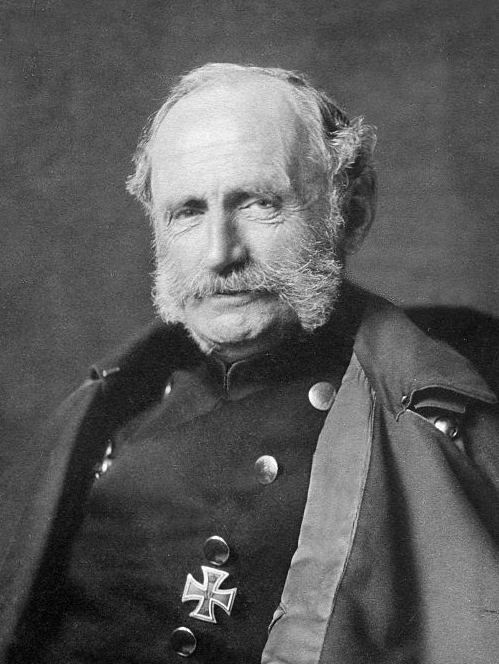Predecessor John House Wettin Successor George Name Albert Saxony | Burial Katholische Hofkirche Role Philosopher Spouse Carola of Vasa Books Sophismata | |
 | ||
Reign 29 October 1873 – 19 June 1902 Born 23 April 1828
Dresden ( 1828-04-23 ) Died July 8, 1390, Halberstadt, Germany | ||
Albert of Saxony
Albert (Frederick Augustus Albert Anton Ferdinand Joseph Karl Maria Baptist Nepomuk Wilhelm Xaver Georg Fidelis; 23 April 1828 – 19 June 1902) was a German King of Saxony and a member of the House of Wettin.
Contents
He was the eldest son of Prince John, (who succeeded his brother Frederick Augustus II on the Saxon throne as King John in 1854) by his wife Amalie Auguste of Bavaria.
Albert had a successful military career leading Saxon troops which participated in the First Schleswig War, the Austro-Prussian War, and the Franco-Prussian War. Otherwise, his reign as king was largely uneventful.
Military career
Albert's education, as usual with German princes, concentrated to a great extent on military matters, but he attended lectures at the University of Bonn. His first experience of warfare came in 1849, when he served as a captain in the First War of Schleswig against Denmark.
When the Austro-Prussian War broke out in 1866, Albert then Crown Prince (German: Kronprinz), took up the command of the Saxon forces opposing the Prussian Army of Prince Friedrich Karl of Prussia. No attempt was made to defend Saxony; the Saxons fell back into Bohemia and effected a junction with the Austrians. They took a prominent part in the battles by which the Prussians forced the line of the Jizera and in the Battle of Jičín. The Crown Prince, however, succeeded in effecting the retreat in good order, and in the decisive Battle of Königgrätz (3 July 1866) he held the extreme left of the Austrian position. The Saxons maintained their post with great tenacity, but were involved in the disastrous defeat of their allies.
During these operations the Crown Prince won the reputation of a thorough soldier; after peace was made and Saxony had entered the North German Confederation, he gained the command of the Saxon army, which had now become the XII army corps of the North German army, and in this position carried out the necessary re-organisation. He proved a firm adherent of the Prussian alliance. On the outbreak of the Franco-Prussian War in 1870 he again commanded the Saxons, who were included in the 2nd army under Prince Friedrich Karl of Prussia, his old opponent. At the Battle of Gravelotte, they formed the extreme left of the German army, and with the Prussian Guard carried out the attack on St Privat, the final and decisive action in the battle.
In the re-organisation of the army which accompanied the march towards Paris the Crown Prince gained a separate command over the 4th army (Army of the Meuse) consisting of the Saxons, the Prussian Guard corps, and the IV (Prussian Saxony) corps. He was succeeded in command of the XII corps by his brother Prince George, who had served under him in Bohemia.
Albert took a leading part in the operations which preceded the battle of Sedan, the 4th army being the pivot on which the whole army wheeled round in pursuit of Mac-Mahon; and the actions of Buzancy and Beaumont on 29 and 30 August 1870 were fought under his direction; in the Battle of Sedan itself (1 September 1870), with the troops under his orders, Albert carried out the envelopment of the French on the east and north.
Albert's conduct in these engagements won for him the complete confidence of the army, and during the Siege of Paris his troops formed the north-east section of the investing force. After the conclusion of the Treaty of Frankfurt (1871), he was left in command of the German army of occupation, a position which he held till the fall of the Paris Commune. On the conclusion of peace he was made an inspector-general of the army and a field marshal.
King
On the death of his father King John on 29 October 1873, the Crown Prince succeeded to the throne as King Albert. His reign proved uneventful, and he took little public part in politics, devoting himself to military affairs, in which his advice and experience were of the greatest value, not only to the Saxon corps but to the German army in general. During his reign, the Saxon monarchy became constitutional.
In the 1870s Albert initiated the construction of a Dresden suburb, the Albertstadt. At that time it was the largest garrison in Germany. Near the former suburb other buildings and places still bear his name: the Albertbrücke, the Alberthafen, the Albertplatz and the Albertinum.
In 1879 he initiated the re-construction of the Saint Afra School in Meissen. In 1897 he was appointed arbitrator between the claimants for the Principality of Lippe.
Marriage and succession
In Dresden on 18 June 1853 Albert married Princess Carola, daughter of Gustav, Prince of Vasa and granddaughter of Gustav IV Adolf, the second to last king of Sweden of the House of Holstein-Gottorp. The marriage was childless.
Albert died at Sibyllenort on 19 June 1902, and was succeeded by his brother, who became King George. He was buried in Dresden on 23 June, among the mourners present were both the German Emperor Wilhelm II and the Austrian Emperor Franz Joseph I.
Decorations and awards
He was the 954th Knight of the Order of the Golden Fleece in Austria in 1850, the 776th Knight of the Order of the Garter in 1882 and the 95th Grand Cross of the Order of the Tower and Sword.
The King of Saxony bird-of-paradise was named in Albert's honour; the Queen Carola's parotia was named for his wife.
